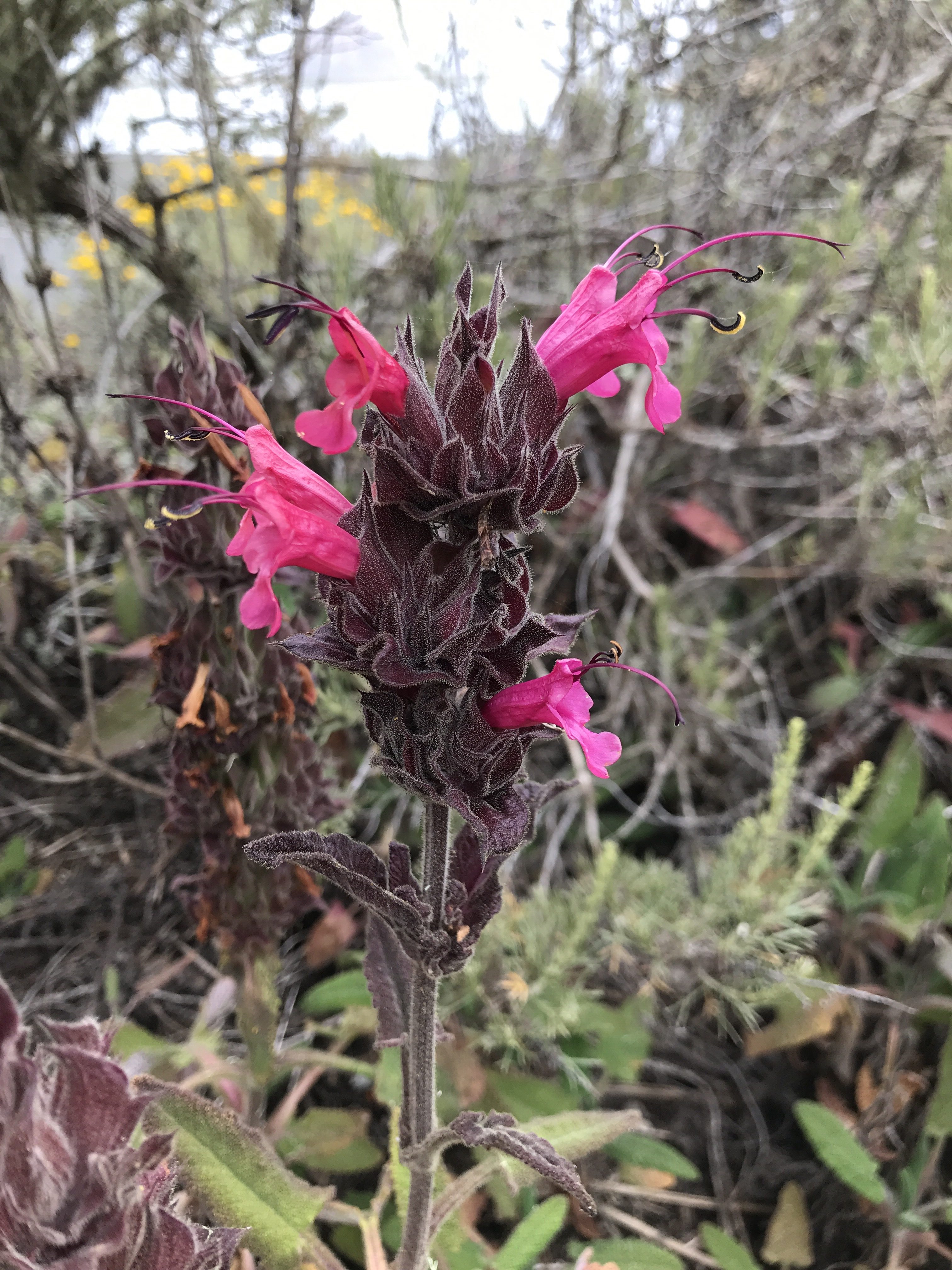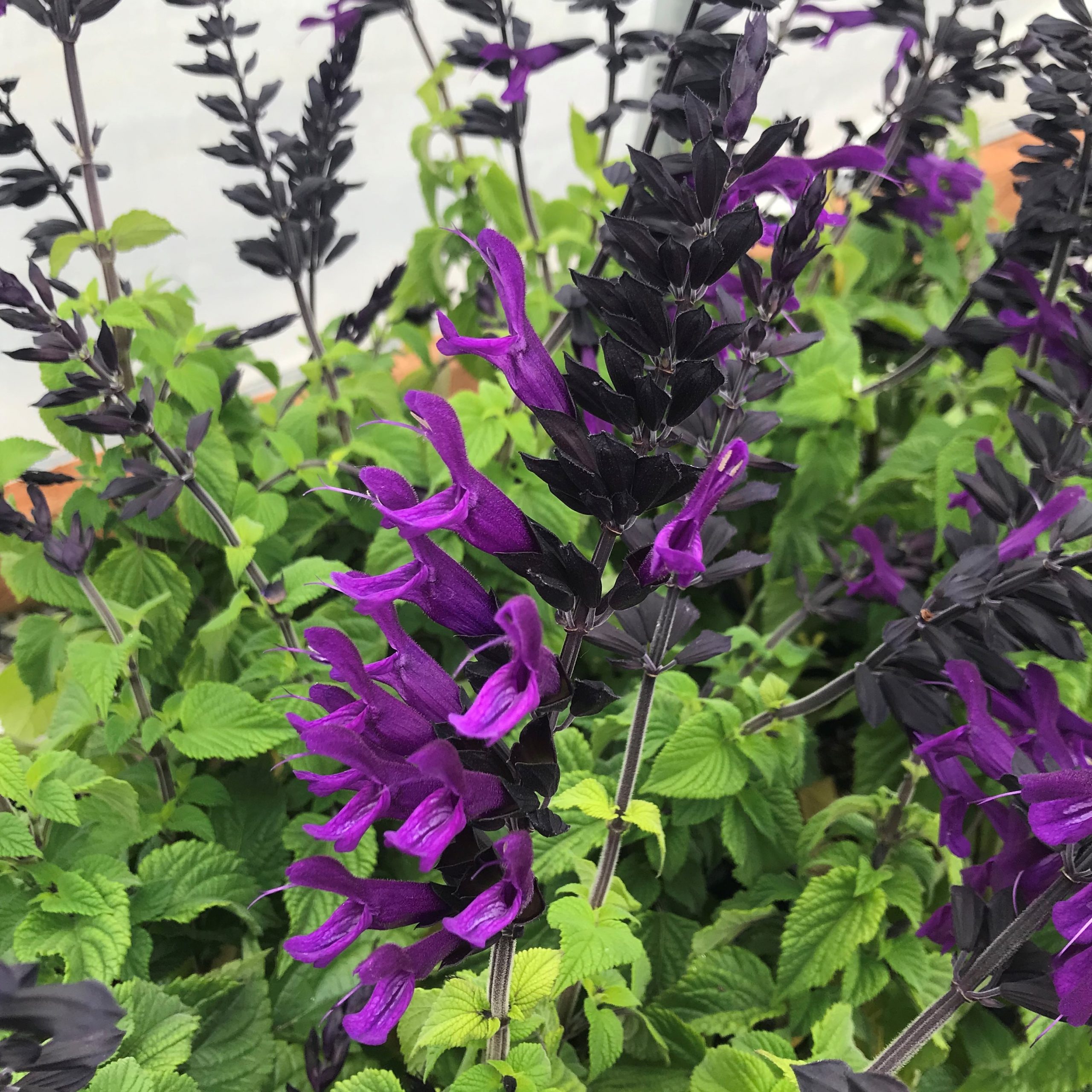

It seems to do best in full shade, under oak trees and other dense foliage.

Plant Hummingbird Sage in dry shaded or partly shaded areas. The dark red flowers are produced in clustered whorled inflorescence 15-30 centimeters long and 6 centimeters in diameter on spike-like stems with each node on the top half of the stem having flowers. The hairs tend to be denser on the bottom surface of the leaves. Like the rest of the plant, they are covered with hairs which make the plant soft to the touch.

They are oblong to almost arrowhead-shaped at the base, and can be puckered with wrinkles, and have rounded teeth at the leaf edges. Its bright green leaves are 8-20 centimeter long, and highly aromatic when crushed or touched. Like many species in the mint family it has very pronounced square stems, and the entire plant is covered with wavy glandular hairs. It spreads by rhizomes and can form colonies up to 1.3 meters in diameter. Unlike most sages, the flowering stems are produced singularly from each plant and only rarely branch. When not flowering, plants grow less than.5 meter (4 to 12 inches) tall forming clumps of sprawling foliage. It is an evergreen perennial with herbaceous flowering stems from a woody base, growing from 0.3 to 1.5 meters (1-3 feet) tall and spreading by rhizomes. It is commonly found in oak woodlands not far from the Pacific Ocean. A common species that grows on shady slopes in oak woodland, chaparral, and coastal sage scrub. It grows in the California coast ranges from the Sacramento Valley south to coastal Orange county in the the south. It is native to southern and central California found growing from sea level to 2,000 feet and is cultivated in gardens for its attractive flowering spikes and pleasant scent. This fruity scented Salvia blooms in March to May with typically dark rose-lilac colored flowers. Its a member of the large Salvia or sage genus in Lamiaceae, or the mint family. Hummingbird sage is a herbaceous plant species with woody bases and a somewhat sprawling habit with upright flowering stems.

It pairs well with coral bells and other members of the Salvia genus when creating a hummingbird or butterfly garden.About Hummingbird Sage (Salvia spathacea) 76 Nurseries Carry This Plant Its scented foliage makes it unattractive to deer yet is pleasantly aromatic for the gardener. In addition to its ability to attract pollinators, this plant makes an excellent groundcover under trees and in shady island gardens. When dividing its rhizomatous root system, select healthy root stock which contains one or more rhizomes and growth buds. It’s best to sow seeds directly into the garden in the fall. No special treatment of seeds is needed to prompt germination. Hummingbird sage can be propagated by seeds or root division. Once the plants are established, it’s quite drought resistant. Hummingbird sage prefers a shady location and grows well under the thick canopy of shade trees. Deadheading the spent flower stalks also helps keeps the garden looking tidy. It requires very little care other than the occasional pruning to maintain its shape. It grows happily in partial to full shade and is hardy in USDA zones 8 through 11. This spring blooming plant typically reaches a mature height of around 12 to 36 inches (31-91 cm.) tall. The stems, as well as the bright green leaves of the plant, are covered with fuzz. This perennial has a woody base and herbaceous flowering stems which tend to be square shaped, like other members of the mint family. Hummingbird sage is cultivated for its attractive burgundy flowers and aromatic fruit scented leaves. As one might guess from the name, the plant has pitcher shaped flowers which attract hummingbirds. This attractive member of the mint family is native to the coastal areas of California. If you’re looking for that special plant for a dry shady spot in the flower garden, you might consider growing hummingbird sage ( Salvia spathacea).


 0 kommentar(er)
0 kommentar(er)
